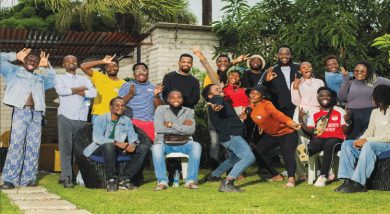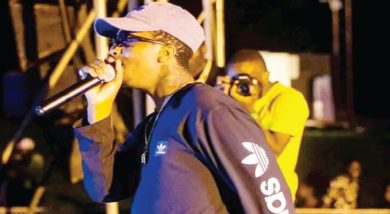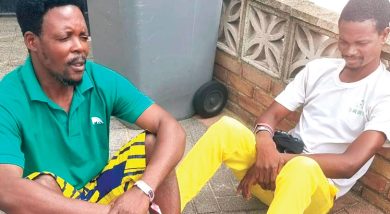The man who walked to America
The remarkable story of Legson Kayira, who walked the breadth of the African continent in his attempt to go to America for an education, finally came to an end when he suffered a stroke on October 12 2012.
According to Angela Stewart-Buchanan, whose Rivonia Media Group had embarked on a life documentary of Kayira’s life, the Karonga born writer died in Noting Hill, London.
“He suffered from an aneurism while out walking. His wife Julie was with him along with his children when he died in hospital,” Stewart-Buchanan said in a brief statement.

In the early 60s, Kayira became a global celebrity when he walked a distance of over 4 800 kilometres from Mpale Village in Karonga in his quest for an American education.
On October 14 1958, Kayira announced to his village that he was going to walk to America. Since no one in the village knew where America was, his mother sent him off with enough flour for a five-day journey.
Dressed in his school uniform, barefoot and penniless, he carried a small axe, a blanket, a map of Africa, a map of the world, and two books—and English Bible and a copy of John Bunyan’s The Pilgrim’s Progress.
Although most travellers carried spears, Kayira was afraid that a weapon would frighten or provoke strangers. His plan was to make his way north to Port Said or Alexandria in Egypt where he would find work on a ship headed for New York.
Within three days, Kayira had crossed the border and begun his trek through Tanganyika (now Tanzania). He walked through the dry and wet seasons, through dust storms and thick jungles, making friends in villages along the way.
Sometimes he followed roads or trails from village to village. Other times he followed the railroad tracks, wishing he had money to take the train. “I was constantly reminding myself that north was on my right,” he said in his acclaimed autobiography, I Will Try.
Kayira learned Swahili and, as he passed through each new region, he tried to learn the words for food, water, and job in the local language. Often he was hired to carry bricks, earning enough money to buy bananas. Occasionally he was able to send money home for his brother and sister’s school fees, as he had promised his mother.
In July of 1959, Kayira reached Mwanza in Tanzania. There he worked for six months to earn the steamer fare to Kampala, Uganda. After more than a year and 1 600 kilometres of travel, mostly on foot, he reached Kampala on January 19 1960. He sneaked through customs with a group of school children, since he had no papers.
In Kampala, Kayira carried bricks for houses to raise funds. After he found that the United States Information Service (USIS) in Kampala had a free library, he began going there often.
One day he chanced upon a directory of American junior colleges. The first entry he saw was for Skagit Valley College, a two-year school in Mount Vernon, Washington. He wrote to them and within two weeks he received a reply, offering him a full scholarship and help finding a job. But Kayira had to wait in Kampala until the following August, when he finally obtained a Nyasaland passport and a visa to enter Sudan.
After buying his first pair of shoes, Kayira set out again on foot. Sometimes he hitched rides in cars or on bicycles. Reaching Juba, Sudan, he took a White Nile steamer downriver to Khartoum where the US vice-consul, Emmett M. Coxson, informed Kayira that in order to get a foreign student visa, he had to have either money or a sponsor and return passage.
However, Coxson was so impressed with Kayira that he contacted Skagit Valley College himself. While Kayira studied algebra at the USIS library in Khartoum, Skagit Valley College students and the community of Mount Vernon raised the money to take Kayira to Washington State. A Mount Vernon family offered him a home.
On December 16 1960, in a suit provided by embassy personnel, Kayira boarded a flight for New York, politely asking the flight attendant for a parachute. In Khartoum Kayira had told his story to a Time magazine reporter: “When I go back to Nyasaland, I will be a teacher. Then I enter politics. When I get defeated, I go back to teaching. You can always trust education.”
Because of the story in Time, Kayira found himself surrounded by reporters at the New York, Washington, DC, and Seattle airports. A reporter even accompanied him on the drive to Mount Vernon. The entire college came out to greet him and that night Kayira saw himself on local television. The following morning, the newspaper headlines read: “Long trek to glory or death ends”.
Kayira became a minor celebrity. He appeared on national television and an article in Reader’s Digest brought him as many as 85 letters a day from all over the world, sometimes with money enclosed. Kayira was much in demand as a speaker although, as a full-time student, he had to turn down about half of the requests. Soon Kayira was helping other African students come to the United States to study.
Initially Kayira majored in physics, but he switched to political science, earning his A.A. degree from Skagit Valley in 1963. His autobiography grew out of papers he wrote for his English classes at the University of Washington in Seattle, where he graduated with a BA in political science in 1965.
Six years after leaving his village, Kayira returned home in the company of a Seattle Times reporter, just in time to witness Nyasaland’s independence as the nation of Malawi. As he finished the last chapters of his autobiography, the villagers told him that he should stay home, start working, and get married. Instead he went to England on a two-year scholarship, for graduate studies at Cambridge University.
I Will Try was published in 1965 and won a Northwest Nonfiction Prize for autobiography. Its title was the motto of his alma matta, Livingstonia Secondary School. I Will Try was published in paperback in 1967 and reissued in 1969, in an abridged and simplified version for middle school students. It is still cited often as a particularly inspirational story.
Kayira settled in London where he continued to write while working as a probation officer.
Kayira went on to write and publish five novels, dealing with the social, cultural, and political issues facing post-colonial Africa. The novels include The Looming Shadow, Jingala, The Civil Servant and The Detainee.
At the time of his death, Kayira was scheduled to meet Demort Short, CEO of Liberty Media Group who own Discovery Channel, Chell Zone and other cable networks; George Twumas, CEO of African Broadcast Network and Richard Dowden of the Royal African Society of Arts, people who bought the idea and were convinced that this is an inspiring global story and not just an African story. —The Nation






Hey, nation. You do not know this story? It has been told several times. Check on the internet.